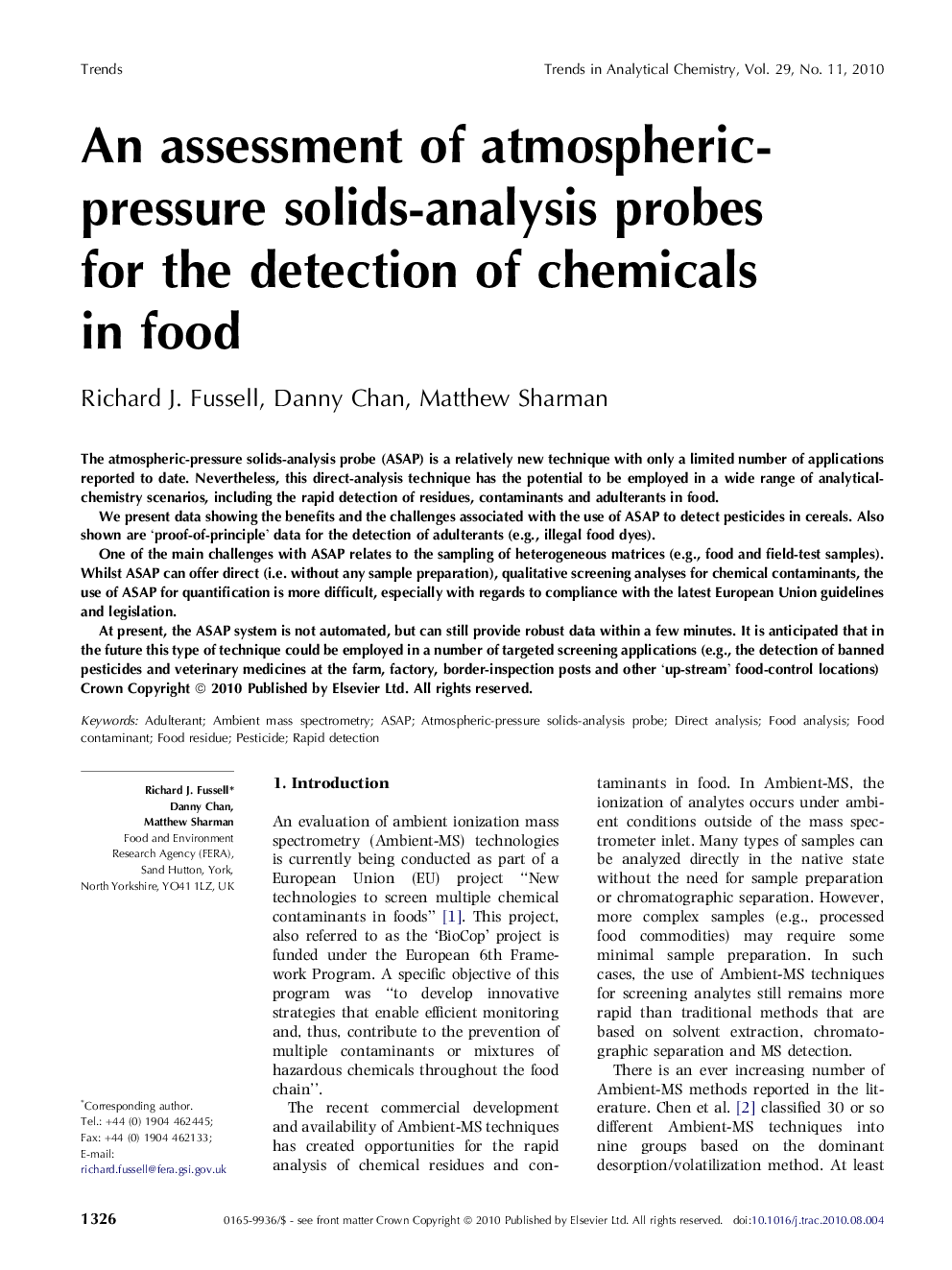| Article ID | Journal | Published Year | Pages | File Type |
|---|---|---|---|---|
| 1249306 | TrAC Trends in Analytical Chemistry | 2010 | 10 Pages |
The atmospheric-pressure solids-analysis probe (ASAP) is a relatively new technique with only a limited number of applications reported to date. Nevertheless, this direct-analysis technique has the potential to be employed in a wide range of analytical-chemistry scenarios, including the rapid detection of residues, contaminants and adulterants in food.We present data showing the benefits and the challenges associated with the use of ASAP to detect pesticides in cereals. Also shown are ‘proof-of-principle’ data for the detection of adulterants (e.g., illegal food dyes).One of the main challenges with ASAP relates to the sampling of heterogeneous matrices (e.g., food and field-test samples). Whilst ASAP can offer direct (i.e. without any sample preparation), qualitative screening analyses for chemical contaminants, the use of ASAP for quantification is more difficult, especially with regards to compliance with the latest European Union guidelines and legislation.At present, the ASAP system is not automated, but can still provide robust data within a few minutes. It is anticipated that in the future this type of technique could be employed in a number of targeted screening applications (e.g., the detection of banned pesticides and veterinary medicines at the farm, factory, border-inspection posts and other ‘up-stream’ food-control locations).
